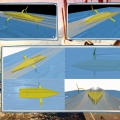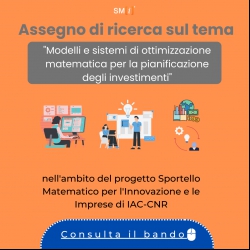
The mathematical modeling and design of racing boats
Behind the success of a racing boat, there are design and analysis tools that can no longer ignore mathematical modeling.
The design of a sailboat represents, from an engineering point of view, an extremely challenging problem.
It is indeed a vehicle that travels immersed in two different fluids, air and water, in which the forces and moments that determine the attitude and speed of the boat are created. Control actions essentially take place in water, while propulsive forces are generated in air. The balance of these two systems of forces is obtained by adjusting both the maneuvering organs (rudder and other appendages) and the sails s that the adjustment possibilities are almost infinite.
However, for a pleasure boat, the main objective is purely recreational, so the design typically focuses on stability and handling ease. In the case of a racing boat, instead, performance is the only goal. Consequently, all possible technical means are put in place to determine the best possible configuration, which is why mathematical modeling has become part of the design and analysis tools used within the racing boat design process.
The higher the goal, the greater the effort made to achieve it: in this sense, winning the America's Cup is perhaps the most important goal for a sailor. America's Cup is the oldest trophy in the world of sport, disputed worldwide for more than a century and a half. Mathematics (computational fluid dynamics in particular) has made a decisive contribution to winning the Cup since 1983 when the available computing power was still very modest. The innovative appendages of "Australia II," the winning hull of that year's Cup, were designed using decidedly simplified mathematical models. It was a potential model with the boundary elements but reliable from an engineering point of view, using decidedly less powerful computing platforms of a current smartphone.
On the other hand, the evolution of hull shapes has quickly led to a leveling up of the hulls' performance, so the uncertainty associated with these models' numerical predictions has become more significant than the difference in performance between the contenders. Today, a difference in the order of 1%'s performance represents the dividing line between victory and defeat.
Consequently, thanks mainly to the advancement of computing resources, increasingly refined mathematical models have been used to address the design process correctly. America's Cup's current regulation provides decidedly unusual boats, certainly very distant from the common concept of a sailing boat. The hull, which floats typically to support the boat's weight, travels completely raised out of the water, and the boat moves to lean on only two elements: the rudder and the centerboard. Lacking a third point of support, we understand how the boat's balance contains elements of great criticality.
Furthermore, the behavior of the flows in the air no longer affects only the propulsive element of the hull but significantly affects speed performance. Therefore, the design philosophy of the hull changes, and, in this sense, mathematical modeling helps to direct designers into a completely new and unexplored field.
In the same way, the design approach also changes concerning the submerged appendages, for which the onset of physical phenomena such as cavitation is observed, typically wholly unrelated to the design of traditional sailboats. Cavitation is the phenomenon of the passage of a water-vapor state at room temperature, determined by the achievement of an extremely low local pressure. This phenomenon occurs on the back of the appendages that support the hull (the so-called "foils"), due to the high speed and, above all, for the necessity to generate the sustaining force to get the hull out of the water. This requires completely different design techniques and mathematical modeling, in this sense, represents a very fundamental element.
In the images, we can observe the various elements of the fluid dynamic field around the hull, both in the air and in the water, particularly the velocity and pressure fields.
This is information that allows you to understand the details of the operation of the different parts of the hull more precisely, allowing them to be modified and improved. Furthermore, since a mathematical model is easily interfaced with an automatic optimization system, we can move towards the frontier of assisted design. In fact, by using forecasting models combined with a parametric reliable moderation algorithm and an optimization algorithm, it is possible to automatically search for the most convenient form for a given design objective. That is an opportunity provided solely by mathematical modeling, which is why modern design techniques can no longer do without it.













